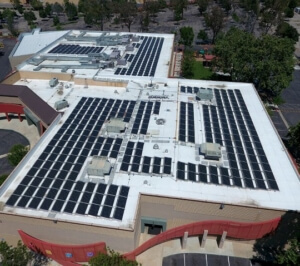The Moment for Change
The commercial real estate (CRE) industry stands at a turning point. With energy costs rising, electric grids straining, and new policy frameworks taking shape, building owners can no longer afford to be passive power consumers. Electricity strategy has become a key driver of cost control, resilience, and asset value.
The Shift in the Energy Landscape
Rising Costs: Utilities across the country are increasing rates faster than inflation, largely due to new grid demands from AI data centers and electrification trends.
On-Site Potential: Rooftops, parking lots, and open spaces are prime real estate for solar generation and battery storage.
New Incentives: Federal and state policies, tax credits, and financing structures have transformed the economics for distributed energy resources (DER).
Resilient Demand: Tenants are looking for buildings that can provide reliability, sustainability, and reduced exposure to grid outages.
Three Ways CRE Can Take the Lead
1. Treat Energy Infrastructure as an Asset
Electricity is no longer just an operating expense. Solar arrays, battery systems, and microgrids are capital assets that can reduce long-term risk, generate revenue, and enhance property value.
2. Build for Flexibility and Resilience
By combining on-site generation with battery storage and smart controls, property owners can:
Offset peak demand and high utility costs
Participate in demand response or virtual power plant programs
Keep tenants operating during outages or extreme weather events
This turns the property into a proactive energy hub instead of a passive consumer.
3. Align with Policy, Capital, and Tenants
Institutional investors and large tenants increasingly evaluate ESG and resilience performance. Properties that integrate renewable energy and advanced energy management are more competitive, attract better tenants, and can access capital on more favorable terms.
The Competitive Edge
Why act now? Because the economics and expectations have changed.
Technology is cheaper. Solar, storage, and control systems cost less than ever.
Regulatory and financial incentives are here. The Inflation Reduction Act and similar programs make investment returns more attractive.
Market differentiation is growing. Tenants, investors, and municipalities reward buildings that take control of their energy destiny.
Commercial buildings that produce, store, and manage power locally will outperform those that don’t—financially and operationally.
How to Get Started
Conduct a site assessment. Analyze energy consumption patterns and available space for solar or storage.
Develop a financial model. Compare current utility costs to long-term savings and tax incentives.
Engage stakeholders. Include finance, operations, and tenants early in the planning process.
Explore financing options. PPAs, leases, or direct ownership can all work depending on your goals.
Implement smart controls. Enable real-time load management, demand response, and monitoring.
A Mindset Shift
Energy strategy is not about checking a sustainability box—it’s about future-proofing your property. Viewing electricity infrastructure as a profit center transforms the way commercial real estate competes in the modern market.
The Takeaway
The clean-energy transition isn’t coming—it’s here.
For commercial real estate, leading the electricity transition means lower costs, stronger assets, and a more resilient portfolio.
At O3 Energy, we help building owners turn these opportunities into action with integrated solar, storage, and energy-management solutions designed for the next generation of energy leadership.


